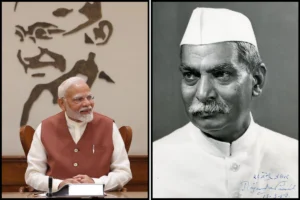
Indian archeology: Dholavira
(Special by Spriha)
Indian archeology: The 5,000-year-old port city of Dholavira is one of the best-preserved urban settlements from the ancient period in Southeast Asia. It can be found on an island in the salt flats of the Great Rann of Kutch on India’s western edge.
Discoveries in Indian archeology
At Dholavira’s northern gate, archaeologists came across two chambers flanking the gate on either side. These chambers looked like storage spaces. And like most storerooms, they were an absolute mess. After more careful excavation, they found ten large symbols, each about 15 inches tall and made out of multiple pieces of white gypsum, a material that’s used in drywall today. Archaeologists also found evidence of decomposed wood surrounding the symbols.

The bright white gypsum would have made the symbols visible from a distance even at night, as torchlight reflected off the mineral, while the surrounding wood would have supported the symbols.
Dholavira signboard
The wooden board was 3.5 meters (11 feet) long and the threshold of the northern gate was also 3.5 meters (11 feet) wide. It seems that it was bolted on the facade of the northern gate and could have been seen from the lower and middle town. These clues led the researchers to conclude that the symbols were part of a billboard. The billboard is typically called the Dholavira signboard.
 The wood of the board protects the gypsum symbols from the environment. But they are written in the script of the Indus Valley Civilization, which has not yet been deciphered, so no one knows what information was displayed so prominently in the city. The climate events that caused the people of Dholavira to abandon their city were not caused by humans but while we cannot decipher what was written on the sign that the people of Dholavira left forgotten in a storeroom before leaving their city for good, it is a message about the dangers of climate change is clear.
The wood of the board protects the gypsum symbols from the environment. But they are written in the script of the Indus Valley Civilization, which has not yet been deciphered, so no one knows what information was displayed so prominently in the city. The climate events that caused the people of Dholavira to abandon their city were not caused by humans but while we cannot decipher what was written on the sign that the people of Dholavira left forgotten in a storeroom before leaving their city for good, it is a message about the dangers of climate change is clear.
Until the script is deciphered, everything that is known about the people and culture of the Indus Valley Civilization comes from archaeological evidence.
The Dholavira signboard is now in the collection at the National Museum in New Delhi, though it is not on display because of preservation concerns. It remains an object of ongoing research as one of the longest inscriptions in the Indus or Harappan script.
Also, read: Teddy Hobbs can read fluently and count in seven languages becomes Britain’s youngest Mensa member
To read more such news, download Bharat Express news apps


















